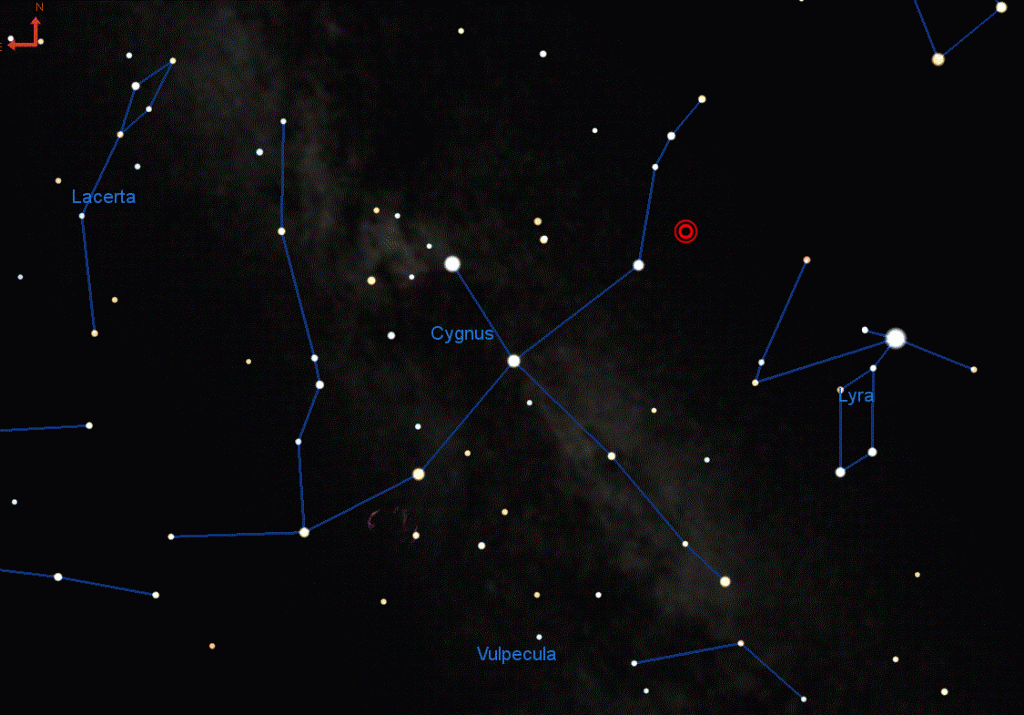GRAPEVINE, TEXAS—A team of astronomers is making a bold prediction: In 2022, give or take a year, a pair of stars will merge and explode, becoming one of the brightest objects in the sky for a short period. It’s notoriously hard to predict when such stellar catastrophes will occur, but this binary pair is engaged in a well-documented dance of death that will inevitably come to a head in the next few years, they say. The researchers began studying the pair, known as KIC 9832227, in 2013 before they were certain whether it was actually a binary or a pulsating star. They found that the speed of the orbit was gradually getting faster and faster, implying the stars are getting closer together. The pair is so close, in fact, they share an atmosphere (as in this artist’s conception of an unrelated stellar merger). KIC 9832227’s behavior reminded the researchers of another binary pair, V1309 Scorpii, which also had a merged atmosphere, was spinning up faster and faster, and exploded unexpectedly in 2008. Now, after 2 years of careful study to confirm the accelerating spin and eliminate alternative explanations, the team reported here today at the American Astronomical Society’s annual meeting that the pair will explode as a “red nova”—an explosion caused by a binary merging—in about 5 years’ time. The scientists will continue to monitor KIC 9832227 over the coming years to both firm up their prediction and learn more about how such a death spiral ends in a red nova. Amateur astronomers can study it, too, measuring how it fluctuates in brightness at an ever-increasing rate. And when it blows, we’ll all be able to enjoy the show.
Quelle: Science
-
Update: 10.01.2017
.
Scientists Predict Star Collision Visible To The Naked Eye In 2022

Scientists predict a star collision in the constellation Cygnus.
Scientists predict that a pair of stars in the constellation Cygnus will collide in 2022, give or take a year, creating an explosion in the night sky so bright that it will be visible to the naked eye.
If it happens, it would be the first time such an event was predicted by scientists.
Calvin College professor Larry Molnar and his team said in a statement that two stars are orbiting each other now and "share a common atmosphere, like two peanuts sharing a single shell."
They predict those two stars, jointly called KIC 9832227, will eventually "merge and explode ... at which time the star will increase its brightness ten thousand fold becoming one of the brighter stars in the heavens for a time." That extra-bright star is called a red nova. They recently presented their research at a meeting of the American Astronomical Society in Grapevine, Texas.
The team has monitored the star pair since 2013, and noticed that its orbital period was slowing down. That suggested it might be following a pattern scientists observed in another star, which exploded unexpectedly in 2008, the team said. They've now ruled out several other explanations for what could be causing the orbital period change, increasing confidence in the prediction.
"It will be a very dramatic change in the sky, as anyone can see it. You won't need a telescope to tell me in 2023 whether I was wrong or I was right," Molnar said at the presentation, according to National Geographic.
Todd Hillwig, an astronomer at Valparaiso University who was not involved in the prediction, told The Two-Way that he thinks "there's room for optimism, and room to say there are other things that could happen. But based on his data I think this looks like a very possible outcome."
Hillwig explains that "we know quite a bit about the physics of stars," but "we don't know a lot at this point about exactly how these stars will merge when that happens, because we've only seen events like this after the fact."
That means knowing when a collision will take place provides a unique opportunity for scientists, Hillwig adds: "The possibility that we could see a system like this, and study it really well beforehand, and then see it happen has the potential to tell us a lot about the physics that's going on with these types of systems."
Quelle: npr




